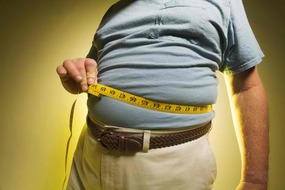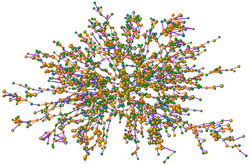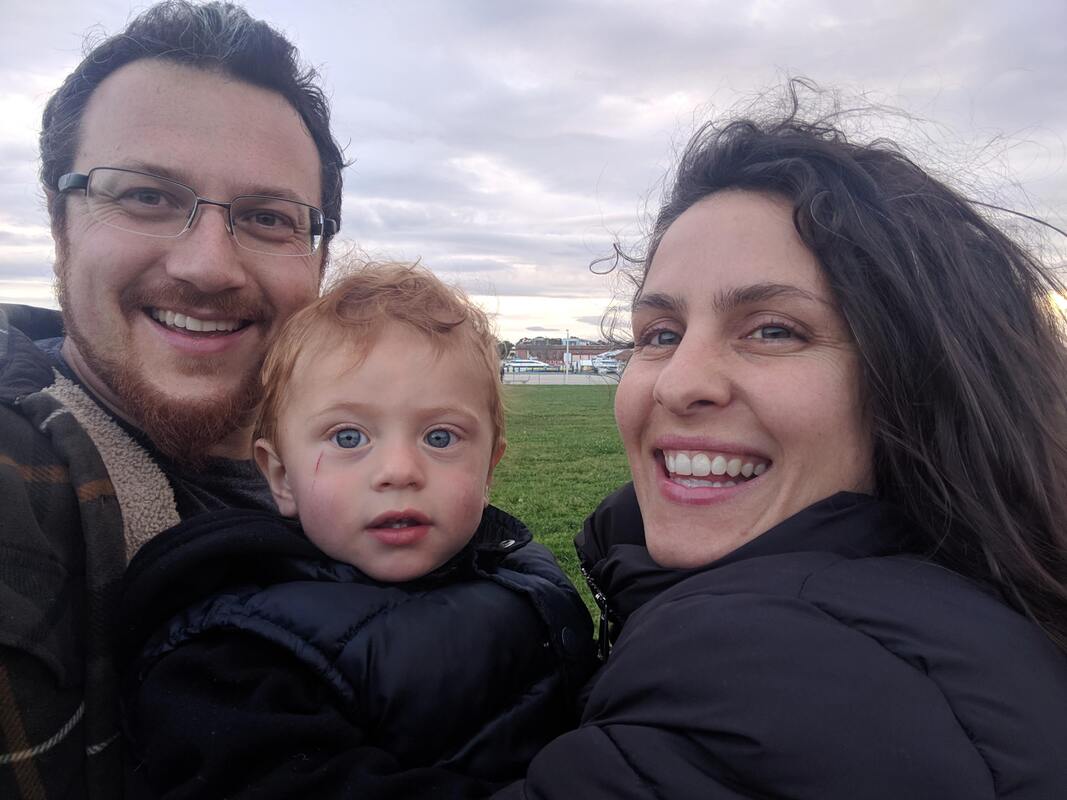 New Year’s Eve is fast approaching and it’s likely that resolutions are being pondered upon. Though every moment can be an opportunity for a new start, the New Year provides us that more symbolic time to look back and reflect, celebrate and move forward with renewed intentions. We can decide which habits we’d like to let go of and new habits/goals/practices we’d like to integrate (or reintegrate). According to a study at the University of Scranton, 45% of Americans usually make New Year’s Resolutions; however, only 8% of us are successful in achieving them. Where are we going wrong? Perhaps it’s in how we set our resolutions/goals. Maybe you’re considering a more active lifestyle for 2015? Want to lose weight? Get your finances in order? For me, it’s practicing mediation and mindfulness. All of these goals sound great, but making them S.M.A.R.T. will ensure our success. S.M.A.R.T. stands for: Specific, Measurable, Actionable, Realistic (or relevant) and Timely. You may have heard of this mnemonic acronym in a business or project management class, but it’s also at the root of effective goal setting as it enables us create a clear map behind our goals and encourages us to address our beliefs and barriers. So let’s get to it! Specific – A goal needs to be specific. A goal to get healthy sounds great, but it’s too general as there are so many ways to do it. Is it exercising more? Cutting back on added sugars? Managing stress? Perhaps your one goal can be broken into a few mini-goals? Make it specific by asking yourself the Five 'W'’s and How…Who, What, When, Where, Why and How? If your goal is to exercise more, for example, you’ll want to specify the type(s) of exercise, when and where you’ll be doing it and how - what tools and resources will you need to succeed? Maybe a new pair of running shoes, set of dumbbells, or fitness buddy? Lastly, why? Why do you want to achieve this goal? Is the motivation coming from within you or from outside influences? Research shows that the more we can align our goals to our internal motivations, rather than external, the more successful we will be in achieving our goal. Measurable – It’s impossible to know whether we’re making progress towards our goals if they aren’t measurable. Measuring progress helps us stay on track and usually involves asking some How’s: How much, How many, and How we’ll know when it's accomplished. For exercise, we'll want to track our frequency, time and intensity (amount of weight, number of steps or heart rate, for example). For nutrition, perhaps you'll measure the cups of water you drink or servings of vegetables at lunch and dinner. For me, it’ll be the time and days per week spent meditating. Actionable – An actionable goal is one with clearly defined actions/steps that we must take in order to achieve the goal. Its one where we are in control over whether or not these actions take place. In other words, it’s not a passive process like taking a pill in hopes for more energy. It requires us to be an active participant in the change process, step by step. In the case of wanting enhanced energy, perhaps a S.M.A.R.T. goal would be to get one more hour of sleep on weeknights or eat a more sustaining lunch with complex carbohydrates and protein to keep us going. Realistic (or relevant) - It is essential to set realistic goals - otherwise we’re setting ourselves up for failure, which can diminish our motivation. A goal should require us to stretch beyond our normal routines and abilities, but allow for success based on our current skills and time available. Goals should also be meaningful and relevant to our abilities and interests. Set goals that are important to where you are in your life right now. Don’t set a goal that someone else is pressuring you to attain. Timely - Knowing that we have a deadline can motivate us to get started and keep us focused. Experiment with short and long-term timelines, but check in regularly to monitor your progress. Research also tells us that those of us who make resolutions are most successful when we have belief in our ability to succeed, have the skills to change, and are ready to change. As we reflect on the S.M.A.R.T. acronym, let’s all take some time to step back and think about our beliefs and our current skills. Before deciding to exercise more, do we need instruction from a trainer? Need to sign up for a cooking class before we can start making dinner 5 days a week? What support, tools and/or resources will you need in order to succeed? I know that I will need some sitting props to meditate more comfortably. My S.M.A.R.T. resolution for 2015 is to practice intentional mindfulness in order to achieve more equanimity. Life’s been good, but I often feel controlled by impulsive thoughts, actions and emotions. There are tremendous benefits to mindfulness and meditation (more to come in future posts), one of which is an enhanced ability to expand the space between action and reaction. My S.M.A.R.T. resolution is to practice quiet sitting/meditation 2 times per week for 5-10 minutes before my 20 minute yoga routine. I’ll keep you all posted with my progress and would love to hear yours! What is your S.M.A.R.T. resolution for 2015? I’d love to hear from you!
1 Comment
 Earlier this week I attended a speech by Dr. Robert Lustig. He’s a pediatric neuroendocronologist (studying how our metabolic hormones affect our brains), author, researcher and speaker who is spreading the word about our broken food system and all the scientific evidence that shows how eating too much added sugar is linked to diabetes, heart disease and liver disease. I left the event excited and inspired by all I learned and impressed with his ability to transform complicated scientific and technical information into a form a general audience could relate to and understand. Concepts he was really hitting hard were the dangers of fructose and its role in fatty liver disease and cognitive decline (more on this in a later post) as well as the danger of visceral adipose fat (or the fat around our liver and abdominal organs). According to Lustig its our waist, not our weight, that matters. It has long been recognized that our body mass index (BMI) can predict our likelihood of morbidity (illness) and mortality (death). The higher our BMI, the more at risk we are for numerous chronic diseases, including type 2 diabetes, cardiovascular disease, and stroke. However, more and more science is revealing that it’s where our fat is stored that makes the difference. This is where waist circumference comes into the picture, since the fat surrounding our liver and other abdominal organs, aka visceral abdominal fat, is very metabolically active. It releases fatty acids, inflammatory agents, and hormones that ultimately lead to higher LDL cholesterol, triglycerides, blood glucose, and blood pressure. Its associated with cardiovascular and metabolic disorders including insulin resistance, chronic inflammation, type 2 diabetes, dyslipidemia, nonalcoholic fatty liver disease, hypertension and several cancers. Lustig's take home message was that being “thin” is not a safeguard against metabolic syndrome. I can be as tall and weigh the same as my best friend and therefore have the same BMI, but if I store my weight in my abdomen and she in her hips I am most at risk. So where do we go from here? Well, let’s get to know our numbers! Diagnosis of metabolic dysfunction includes measurements of cholesterol, triglycerides, fasting glucose, blood pressure and waist circumference*. For your best health, your waist should measure no more than 102 cm (40 in) in men and 88 cm (35 in) in women. A lower waist circumference cutpoint (eg, 90 cm [35 inches] in men and 80 cm [31 inches] in women) appears to be appropriate for Asian Americans. Look forward to more posts on this topic and changes we can make help our belts cinch a little tighter. If you’re interested in learning more about Dr. Lustig’s research, here’s the link to his YouTube video that went viral a few years back. He was also interviewed in the amazing documentary that was recently released called Fed Up. And he’s in a current PBS series now called Sweet Revenge. He and his team at UCSF also created an awesome website sugarscience.org that has a resource kit and tons of user-friendly info. Spread the word!! * To measure your waist circumference start at the top of your hip bone, then bring the tape measure all the way around, level with your belly button. Make sure it's not too tight and that it's straight. Don't hold your breath while measuring.  In a recent class I facilitated, a member reminded me of the importance of our social network and its impact on our activity levels and weight. I thanked him for the valid commentary and recalled a Ted Talk I watched some time ago. It sounds crazy, but it’s true: the people we associate with can have a powerful effect on our behavior - for better or for worse. Per Nicholas Christakis’s talk and research paper, the effects of our social network are vast – affecting our body weight and even our levels of happiness. Regarding body weight: A person’s chances of becoming obese increased by 57% if he or she had a friend who became obese in a given interval. Among pairs of adult siblings, if one sibling became obese, the chance that the other would become obese increased by 40%. If one spouse became obese, the likelihood that the other spouse would become obese increased by 37%. Christakis and his colleague even found that if your friend’s friends are obese your risk of obesity is 25% higher and if your friend’s friend’s friends are obese your risk is 10% higher. There is additional research that shows how our social environment can affect our physical activity and sedentary behaviors. So how does this work? Many think that is due to the changes in our social norms - what an acceptable weight is, for example. Or perhaps our perception of our own risk of illness depends on the people around us. Either way, our social networks have value and as Christakis shared in his talk, the benefits of a connected life outweigh the costs. That being said, let’s take a step back and evaluate our social network, especially in our effort to Maintain No Gain. If you are surrounded by those who spend most of their time watching TV and eating out, maybe it’s time to expand your social network. Join Meetup.com to find a hiking group or book club. Sign up for a cooking class or intramural sports team in your community or seek out volunteer opportunities in your neighborhood to meet new friends. Can you share some other ways? I'd love to hear from you! |
AuthorHello and welcome! My name is Andrea Notch Mayzeles. I am a Certified Health Education Specialist, Mom, and Master of Public Health dedicated to the path of well-being. As a wellness professional I am committed to continued learning and am here to share research, recipes and musings on health, psychology, personal development, and parenting. I hope you enjoy! Categories
All
|

 RSS Feed
RSS Feed